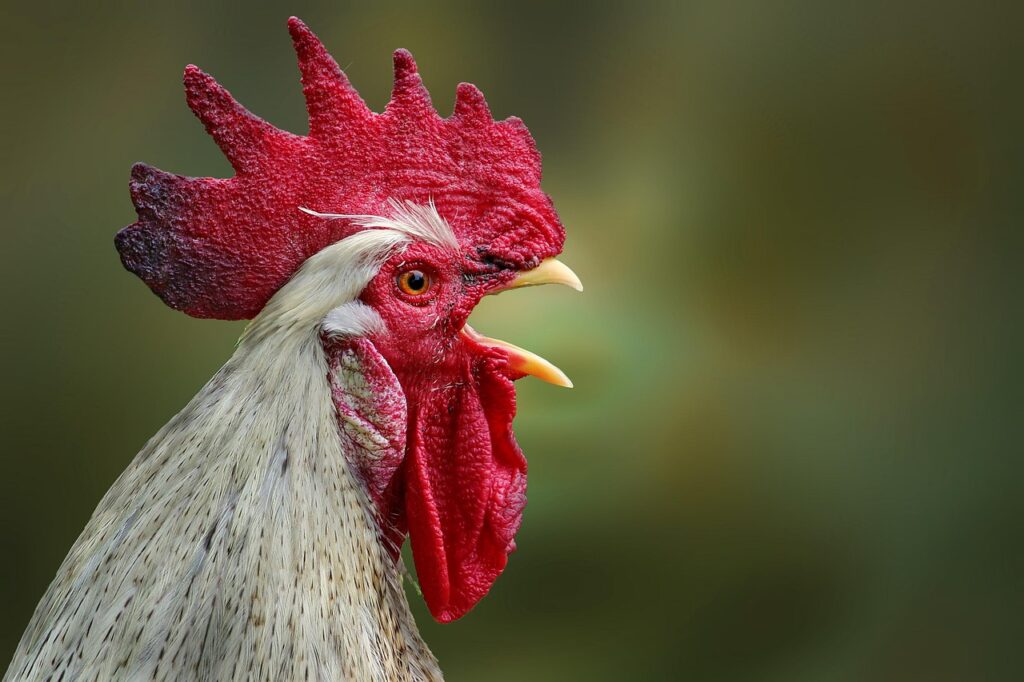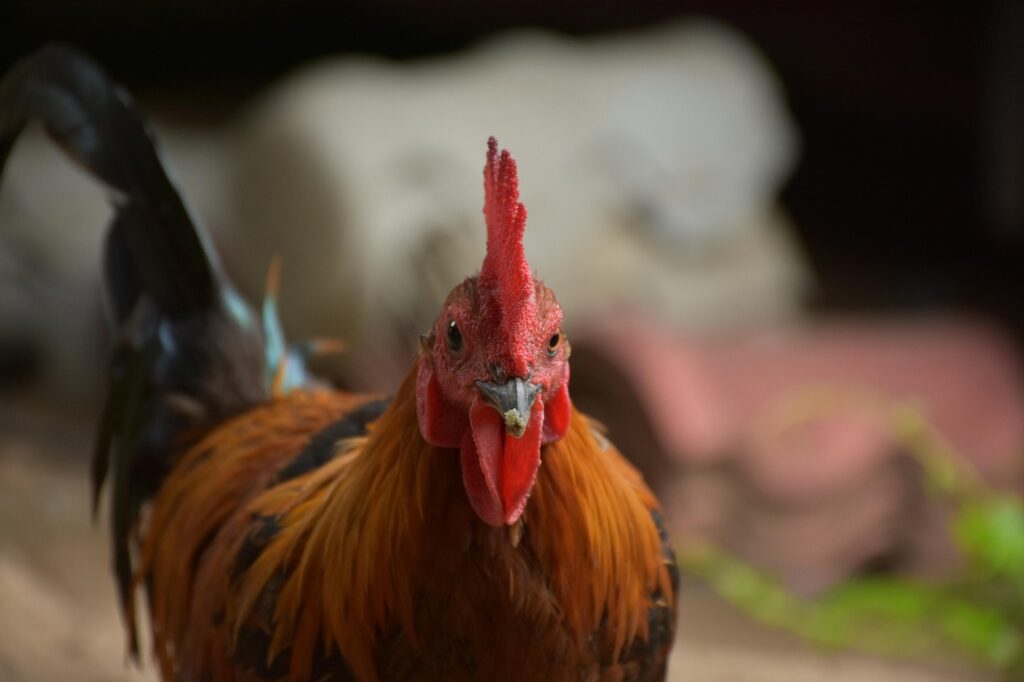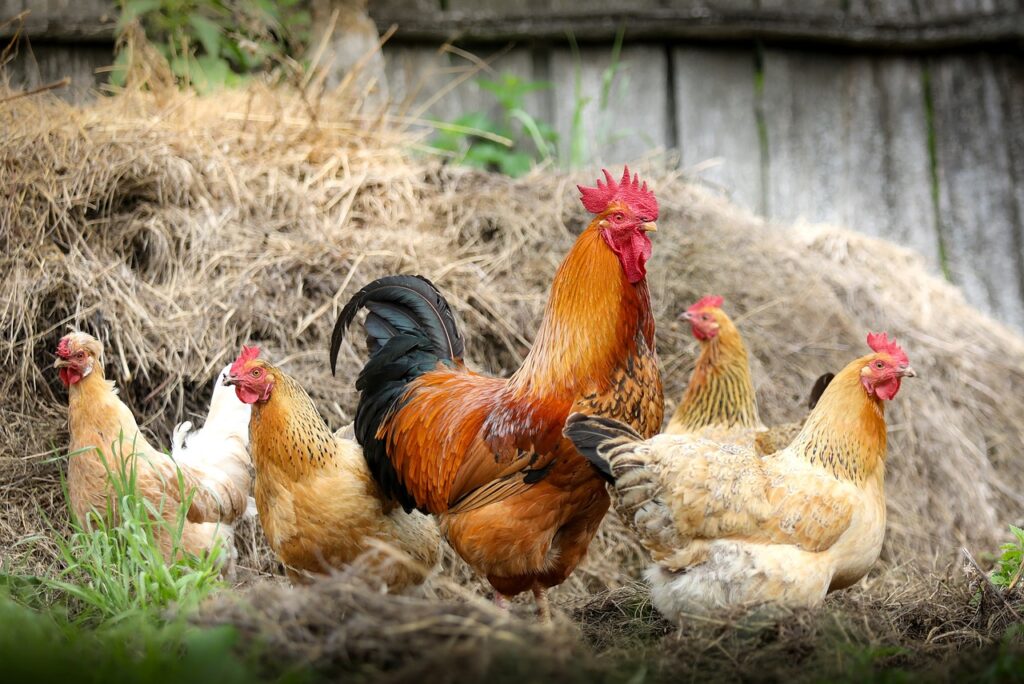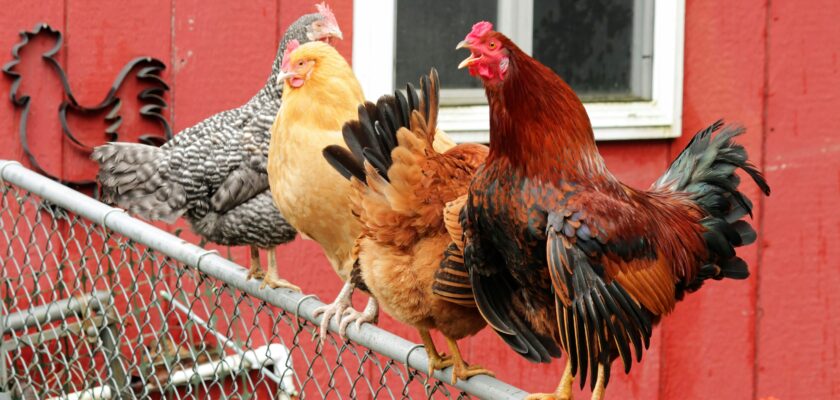Introduction
Backyard poultry keeping has exploded in popularity in recent years. Whether for fresh eggs or simple companionship, chickens are popping up in suburban yards across the globe. However, there’s often confusion about the difference between a rooster and a chicken—and no, they’re not completely separate animals.
In this guide, we’ll cover everything you need to know to confidently tell them apart, backed by biology, behavior, and expert insights.

Image by Andreas Neumann from Pixabay
Understanding Basic Terminology
What Is a Chicken?
A chicken refers to the species Gallus gallus domesticus. It’s the general term that includes both males and females of the species—roosters, hens, chicks, and pullets all fall under the umbrella of “chicken.”
What Is a Rooster?
A rooster is the adult male chicken. Also called a cockerel (if under one year old), the rooster is distinct in both behavior and appearance from hens (adult female chickens).
Biological Differences
Physical Appearance
Roosters are usually larger, with more vivid plumage, including long, arching tail feathers and pointed saddle and hackle feathers. Their combs (the red crest on top of their heads) and wattles (the fleshy hanging part under the beak) tend to be more prominent.
Hens, by contrast, are generally more muted in color, smaller in size, and lack the flashy feathering.
| Trait | Rooster | Hen |
| Comb & Wattle Size | Larger | Smaller |
| Tail Feathers | Long & Curved | Short & Rounded |
| Body Size | Larger | Smaller |
| Feather Color | Bright & Iridescent | Dull & Uniform |
Hormonal Traits
Roosters produce higher levels of testosterone, which drives behaviors like crowing, mating, and dominance. Hens produce estrogen, influencing their reproductive cycle and egg-laying behavior.
Behavior and Temperament
Aggression and Dominance
Roosters tend to be more territorial and aggressive, especially toward other males. They may display dominance through chest-bumping, flaring feathers, and even fighting.
Hens are usually more docile, although a dominant hen can still enforce a pecking order within the flock.
Rooster’s Role in the Pecking Order
The rooster often assumes the role of flock protector and leader, warning hens of predators and even leading them to food sources. He crows to assert territory and intimidate rivals.

Image by thirawat from Pixabay
Sound and Communication
Why Roosters Crow
Roosters crow not just at dawn, but throughout the day. Crowing is a way to mark territory, communicate dominance, and alert the flock.
Chickens’ Vocalizations
Hens have over 30 vocalizations, including clucking for eggs, squawking for danger, and low murmurs for contentment. Their communication is more nuanced but less loud.
Role in Egg Production
Rooster’s Role in Fertilization
A hen does not need a rooster to lay eggs—but if you want fertilized eggs for hatching, a rooster must be present. Roosters mate with hens to fertilize eggs before they’re laid.
Do Chickens Need a Rooster to Lay Eggs?
No. Hens will lay eggs without a rooster, but those eggs will not be fertilized or develop into chicks.
Life Expectancy and Health Considerations
Roosters and hens generally live 5–10 years, depending on care. However, roosters are more prone to injury from fights or predator attacks due to their protective nature.
Vaccination, proper diet, and safe housing are crucial for both genders.
Use in Farming and Homesteading
Meat vs. Egg Production
Hens are used primarily for egg-laying. Roosters may be kept for breeding or raised for meat—particularly in heritage or dual-purpose breeds.
Breeding Programs
In selective breeding programs, roosters contribute half the genetics of future generations, making their traits critical to control and optimize.

Image by svklimkin from Pixabay
Legal and Zoning Considerations
Many cities allow hens but ban roosters due to crowing noise. Always check your local ordinances before adding a rooster to your flock.
See this guide on Backyard Chicken Laws for more information by location.
Rooster vs. Chicken: In Pop Culture
From Foghorn Leghorn to rooster-themed zodiac symbols, roosters are often portrayed as confident, loud, and protective, while hens represent nurturing and community.
This cultural duality reinforces real-world traits observed in both.
Summary Table: 15 Key Differences
| Feature | Rooster | Hen |
| Gender | Male | Female |
| Size | Larger | Smaller |
| Color | Brighter | Duller |
| Tail Feathers | Long & Arched | Short & Flat |
| Comb/Wattle | Larger | Smaller |
| Sound | Crowing | Clucking |
| Aggression | Higher | Lower |
| Egg Production | No | Yes |
| Fertilization Role | Yes | No |
| Dominance | Leads Flock | Follows Leader |
| Crowing | Yes | No |
| Breeding Use | Yes | No |
| Lifespan | Similar | Similar |
| Use | Meat/Breeding | Eggs |
| Legal Limits | Often Restricted | Commonly Allowed |
FAQs
1. Can a chicken be both a hen and a rooster?
No. Chickens are the species. A rooster is a male chicken, and a hen is a female chicken.
2. Will a hen lay more eggs with a rooster?
No. A rooster does not affect the frequency of egg-laying—only fertilization.
3. Are roosters necessary for a healthy flock?
Not necessarily. Many backyard flocks thrive without roosters, especially if reproduction isn’t the goal.
4. How can I tell a rooster from a pullet (young hen)?
Look for early crowing, larger combs/wattles, and pointed hackle and saddle feathers as clues.
5. Do roosters protect hens?
Yes. They often act as protectors, warning the flock of danger and even physically defending them.
6. Can you keep multiple roosters?
It depends on space and breed temperament. Without enough hens or room, rooster fights are common.

Conclusion
Understanding the differences between a rooster and a chicken is essential whether you’re a seasoned homesteader or a curious beginner. From crowing and combativeness to egg-laying and legal limits, each has a specific role in the coop.
